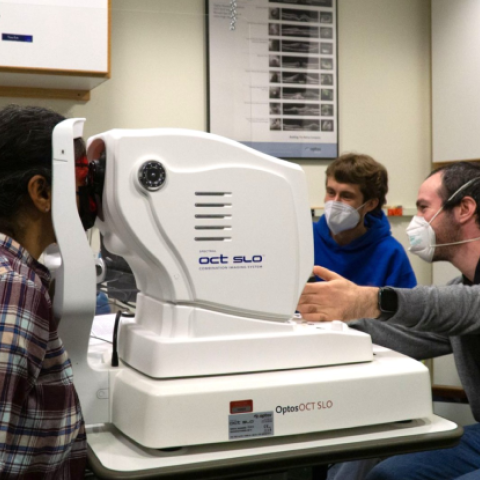

- Principal Investigator:
- Preeti Verghese
Stereopsis is important for tasks of daily living such as eye-hand coordination. It is best in central vision but is also mediated by the periphery. Previously we have shown that individuals with central-field loss who have residual stereopsis in the periphery perform better at an eye-hand-coordination task. Here we sought to determine what sets the limit of stereopsis, defined as the largest disparity that supports the sustained appearance of depth, in the near periphery in healthy individuals. We used a rigorous method to determine the uppermost limit of disparity. The disparity limit is the point at which the threshold for judging dichoptic separation between the half-images is equal to the monocular width-discrimination threshold. The disparity limit at 10° was a factor of 2–4 times larger than the fovea, regardless of the meridian tested. The increase in the disparity limit with eccentricity was shallow, similar to that of Panum's area. Within this disparity limit, disparity increment thresholds were comparable for foveal and peripheral targets, illustrating the significance and utility of peripheral stereopsis, especially in the absence of foveal stereopsis.
This project is now completed. Please see the Publication section for results.

